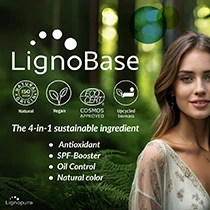Evonik and Intrapore forge alliance to “immobilize” PFAS contamination in groundwater

09 Mar 2023 --- In light of growing awareness about high levels of micropollutants in the environment, Intrapore has joined chemicals supplier Evonik to expand the reach of its remediation technologies, which are designed to remove traces of toxic per- and polyfluorinated surfactants (PFAS) in soil and groundwater.
Through Intrapore’s method, contaminated groundwater can be absorbed through environmentally-friendly technology. Evonik has inked an agreement for exclusive distribution of Intrapore’s technology across Europe.
“It’s important to note that there are many different types of PFAS, and new ones are constantly being developed to replace older ones that are being phased out. Therefore, the prevalence of PFAS in the environment can vary depending on the location and the specific industrial and consumer products used in that area,” Dr. Julian Bosch, managing director of Intrapore, tells PersonalCareInsights.
“Many of our customers are facing PFAS issues, and the Intrapore partnership boosts our ability to offer them customized solutions. After diligent research, we believe these innovative adsorption technologies represent best-in-class offerings,” remarks Mike Mueller, head of Evonik Active Oxygens’ soil and groundwater remediation business in the EMEA region.
 The EC estimates that 92% of harmful micropollutants in wastewater come from cosmetics and pharmaceuticals.The family of chemicals called PFAS are notoriously referred to as “forever chemicals” after being found to linger in the human body for years without degrading. Posing a potential health hazard, they have been discovered across a broad range of unexpected sources, including toilet paper.
The EC estimates that 92% of harmful micropollutants in wastewater come from cosmetics and pharmaceuticals.The family of chemicals called PFAS are notoriously referred to as “forever chemicals” after being found to linger in the human body for years without degrading. Posing a potential health hazard, they have been discovered across a broad range of unexpected sources, including toilet paper.
The partnership comes at a time when the European Commission (EC) is proposing stricter rules to protect its waters that would require companies within the beauty and personal care industry to pay to remove “toxic micropollutants” from EU wastewater, as part of the EU Green Deal.
The EC estimates that 92% of harmful micropollutants in wastewater come from cosmetics and pharmaceuticals.
A robust toxin
Due to their prevalence in commercial use, PFAS are present at low levels throughout the environment. Studies have shown that exposure to some PFAS may be linked to harmful health effects in humans and animals.
Evonik holds its own portfolio of solutions within its Active Oxygens business line for tackling a wide range of soil and groundwater contaminants. This portfolio is marketed alongside Intrapore’s range of remediation solutions.
“In terms of Evonik’s production, I can indeed tell you that Evonik uses PFAS only in very minimal amounts within our own production. These are closed systems, where any small amounts of leftover substances are professionally disposed of,” an Evonik spokesperson tells PersonalCareInsights.
“There have been no indications of production-related PFAS contamination around Evonik’s sites. Nevertheless, we are working closely with local regulators to address any potential environmental questions that may arise.”
Intrapore’s on-site, or “in situ,” soil and groundwater remediation procedures are considered low energy and climate-friendly.
As opposed to classic pump-and-treat methods, where contaminated groundwater is pumped out of the soil, treated and then replaced, Evonik and Intrapore treat contamination directly at the source.
“The result is minimally invasive, long-lasting and has a very low energy and carbon footprint,” details the company.
 Intrapore’s remediation technologies include Intraplex, which is its main patented formulation to immobilize PFAS detected in groundwater.Intrapore’s remediation technologies include Intraplex, which is its main patented formulation to immobilize PFAS detected in groundwater.
Intrapore’s remediation technologies include Intraplex, which is its main patented formulation to immobilize PFAS detected in groundwater.Intrapore’s remediation technologies include Intraplex, which is its main patented formulation to immobilize PFAS detected in groundwater.
Using activated carbon at a micrometer scale, Intraplex can be applied right on-site to absorb and contain PFAS contamination. This is particularly important for places which show high levels of PFAS that could otherwise seep into surrounding groundwater.
“We are injecting a liquid suspension of activated carbon into the ground,” Dr. Bosch details. “Activated carbon is known in many industries as an adsorbent of harmful substances. But our carbon is in a special liquid form, so it can be injected into contaminated groundwater areas.”
“Once the carbon is in the ground, it will adsorb the toxic PFAS, and the surrounding groundwater will be clean and PFAS-free.”
Divergent safety advice
Many of the PFAS we come in contact with are said to originate from consumer products, such as hygiene products before they contaminate public water and food sources. Previous research showed that PFAS used in cosmetics may penetrate the human skin barrier and accumulate in the body, increasing cancer-risk.
Last October, the study warned that certain levels of 13C4-Perfluorooctanoic acid – a kind of PFAS – can be absorbed internally via the skin when mixed into a sunscreen.
On the other hand, the UK-based Cosmetic Toiletry & Perfumery Association argued that PFAS used in makeup does not make products unsafe as they undergo strict regulation to meet legal safety requirements. Just because PFAS are environmental polluters, it does not mean that the chemicals used in cosmetics are equally harmful.
In spite of a wavering consensus among specialists who have weighed in on the matter, the EU plans to restrict 10,000 PFAS in a new proposal drafted by five countries.
“Without ambitious rules for clean air and water, the industry will not change direction in any nature-beneficial or health-positive way,” Susie Hewson, founder at Natracare, previously told PersonalCareInsights.
In the US, the state of California banned the sale of intentionally added PFAS to cosmetics last October.
Recently, Thinx settled a class action lawsuit after allegations were made that its period underwear products contain potentially harmful PFAS chemicals despite being advertised as sustainable, organic and reusable.
By Benjamin Ferrer












